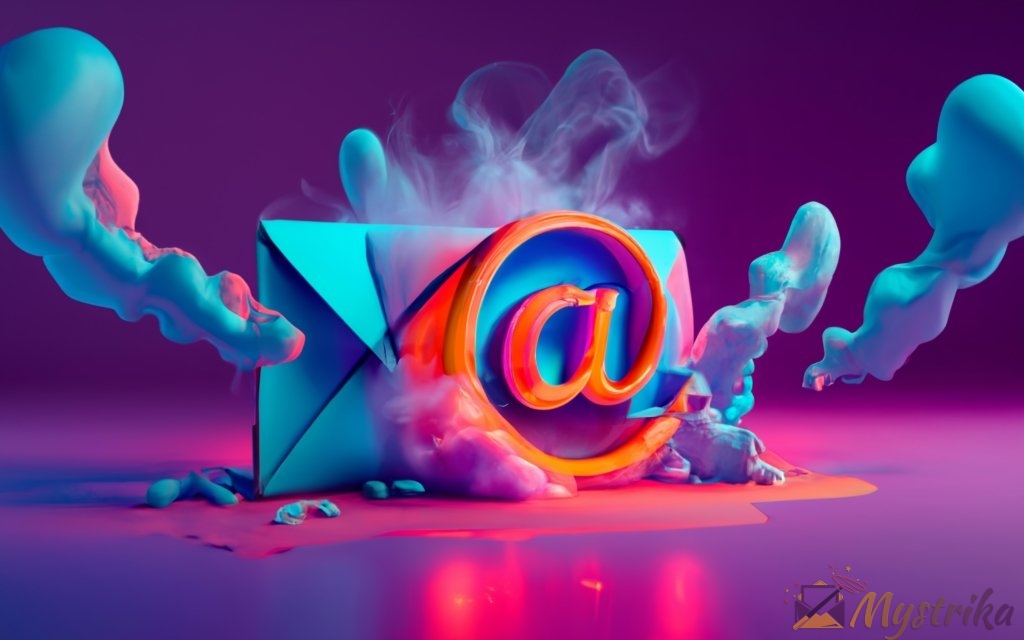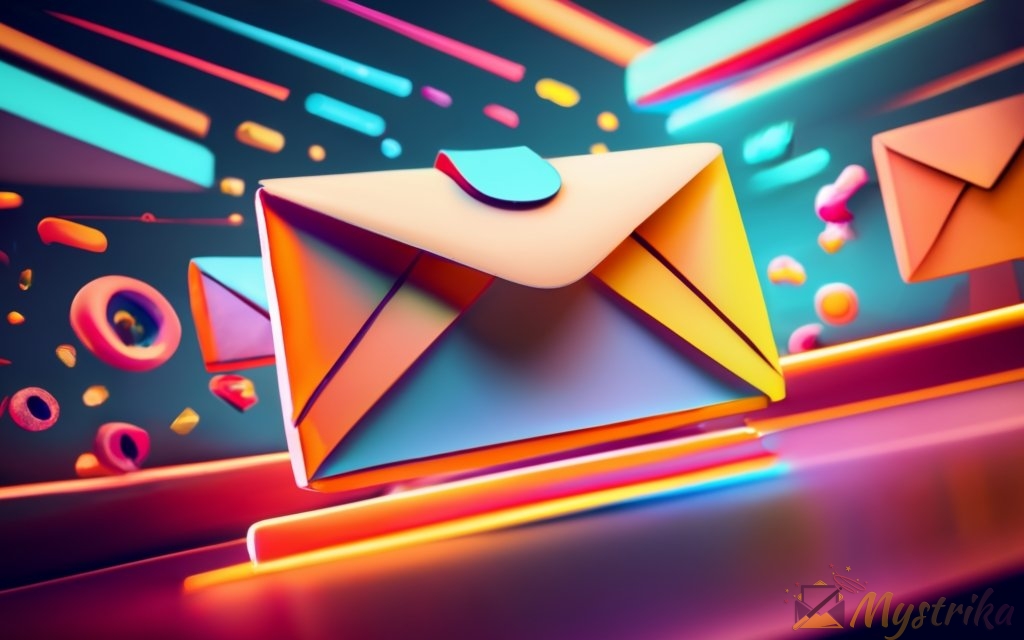In this comprehensive guide, we’ll demystify the infamous Promotions tab, investigate what causes that dreaded purgatory placement, and explore pro tips to improve visibility and engagement even when your emails get filtered. Welcome to Promotions tab paradise!
Understanding Gmail’s Promotions Tab and How It Works
Gmail rolled out a major update back in 2013 that introduced tabbed inboxes. This included the infamous Promotions tab that has caused headaches for many email marketers over the years. But what exactly is this tab, and how does Gmail determine which emails get funneled into it? Let’s break it down.
What is the Gmail Promotions tab?
The Promotions tab is one of several tabs that Gmail can display, along with Primary, Social, Updates, and Forums. Emails that Gmail deems to be marketing messages, newsletters, offers, and other promotional content get sorted into the Promotions tab automatically.
Gmail uses a complex, machine learning-based algorithm to analyze each incoming email and decide which tab it belongs in. The algorithm looks at factors like:
- The content of the email body – Does it contain marketing language, CTAs, offers etc?
- The sender address – Is it a known bulk sender? Shared IP? Generic domain?
- Subscriber engagement – Do they normally open this type of email?
- Complaint rates – Has the sender had emails marked as spam?
It’s important to note that not every Gmail user has tabs enabled on their account. Google estimates that about half of all Gmail inboxes use the tab options. The rest just have one unified Primary inbox.
How does Gmail decide which emails go to Promotions?
The specifics of Gmail’s tab algorithms are proprietary and constantly evolving. But generally speaking, emails with any of the following characteristics often get placed in Promotions:
- Sent from generic domain names like
info@orno-reply@instead of a person’s name - Contain marketing language like “Buy now”, “Free trial”, “Deals” etc.
- Have multiple links, images, or attachments
- Come from a sender without proper SPF and DKIM authentication in place
- Are sent to a list with low engagement metrics or high complaint rates
Additionally, emails from certain sources seem more likely to hit the Promotions tab, including:
- Third-party email marketing platforms like Mailchimp, Constant Contact, etc.
- Senders with a shared or pooled IP address
- Retail/eCommerce notification emails like shipping updates, order confirmations etc.
Of course, not every marketing email ends up in Promotions. Gmail’s filters look at each message individually, so a subscriber’s history with your emails can impact tab placement as well.
Benefits and drawbacks of the Promotions tab for email marketers
When the Promotions tab first arrived, many email marketers panicked. They worried their emails would be ignored and their open and click rates would plummet.
However, studies have shown that the tabs have increased deliverability, open rates, and decreased spam complaints overall. Segmenting in this way helps subscribers organize their inboxes more effectively.
Still, the Promotions tab does present some challenges:
Positives
- Encourages better list segmentation and targeting
- Motivates more engaging, relevant email content
- Provides a space for appropriate promotional emails
Negatives
- Reduces visibility compared to Primary inbox
- Harder to get subscribers to add senders to contacts
- No control over final placement as sender
The best approach is to embrace the Promotions tab as-is and optimize your emails to stand out wherever they land. We’ll explore some tactics for this later in the article.

Most Common Reasons Mailchimp Emails Get Sent to Promotions
So now that we understand how the Gmail Promotions tab works, let’s explore the most frequent causes for Mailchimp emails ending up there. By knowing what triggers the filters, you can troubleshoot issues and optimize your campaigns.
Using generic “from” addresses
One of the fastest ways to get sorted into Promotions is using a generic “from” address like [email protected] or [email protected].
Gmail wants to see addresses that look like real people, such as [email protected]. Messages from personal addresses tend to bypass the promotions filter more often.
Some reasons to avoid generic addresses:
- Impersonal and not engaging
- Indicates a bulk email or newsletter
- No way to build sender reputation
Tip: Set up a dedicated address like [email protected] instead of using info@ or no-reply@.
Too many links and images
Emails with excessive links and images set off Promotions alarms for Gmail. Why?
- Personal emails typically don’t have more than a couple of links/images.
- Too many links/images signify promotional content.
- Lots of links may indicate affiliate schemes or spam.
Gmail limits:
- No more than 2-3 links per email
- Keep images to 1-2 per email, including your logo
Too much of a good thing can sabotage your hard work. Stick to modest link and image usage.
Words perceived as “salesy” or promotional
Marketing copy is meant to entice and excite. But words like “Buy now”, “Free gift”, “Limited time”, and “Free trial” are surefire ways to get sent to Promotions.
Avoid using:
- Time limited offers e.g. “24-hour sale!”
- Calls to purchase e.g. “Add to cart”
- Discount language e.g. “50% off”
- Incentives e.g. “Free shipping”
- Urgency e.g. “Act fast!”
Rather than overt sales language, focus on value, exclusivity, and engaging with the reader.
Sending from a shared IP address
Most email service providers use shared IP addresses, meaning multiple senders transmit from the same set of IPs. This includes Mailchimp.
Shared IPs have higher abuse rates, so emails from them often go straight to Promotions. Dedicated IPs can circumvent this, but they are pricey.
Ways to combat shared IP drawbacks:
- Maintain stellar list hygiene and engagement
- Set up proper SPF, DKIM, and DMARC authentication
- Send consistently, without large gaps between campaigns
- Keep compliant with ISP best practice guidelines
Avoid anything that might get your account flagged for spam activity when on shared IPs.
Low engagement and high complaint rates
How your list engages with your emails is a big ranking factor for Gmail. Low open and click rates signal you aren’t providing value. Spam complaints are even worse.
Tactics to boost engagement:
- Personalize content based on customer data
- Send more targeted emails through segmentation
- Limit email frequency to avoid fatigue
- Use inbox preview text to provide snippet of value
- Test different subject lines, content styles etc.
Deliverability depends on pleasing your recipients. Fix engagement issues before reaching out to new contacts.
Preview Text (Pre-Header) Best Practices
Preview text has a major impact on email engagement. Follow these tips:
- Write 2 clear, compelling sentences
- Highlight key info from the email
- Use reader-benefit focused language
- Avoid repeating the subject line
- Include a call to action
Well-crafted preview text can improve open rates dramatically. Make this small text mighty.

Tips to Keep Your Mailchimp Emails in the Primary Tab
Even though the Promotions tab is not necessarily bad, most email marketers would prefer their Mailchimp newsletters go to the Primary inbox. While there are no foolproof methods, these tips can improve your chances of avoiding Promotions.
Ask subscribers to move your emails
The only surefire way to get your Mailchimp emails into the Primary tab is to have subscribers manually move them. Here are some ways to prompt them to adjust their settings:
In welcome emails: Explain the value they’ll get from your messages and importance of adding your address to Primary. Provide easy instructions for moving emails on desktop and mobile.
In email content: Periodically remind subscribers to drag your emails from Promotions to Primary. Consider offering an incentive for doing so.
On signup forms: Add a checkbox for new subscribers to opt-in to Primary inbox placement. Make it clear this gives the full experience.
On social media: Post reminders on Facebook, Twitter etc. asking current subscribers to update their tab settings.
With confirmation popups: Website popups are annoying, but effective. Request Primary placement when someone signs up.
Being transparent about the benefits of receiving your emails in the Primary tab motivates subscribers to take action. Just don’t badger them about it.
Personalize content and segmentation
Impersonal bulk emails are magnets for the Promotions tab. The more targeted and personalized your content is, the better chance it has of hitting Primary.
Segmenting your list allows you to tailor emails, instead of blanket blasting everyone. For example:
- Group by purchase history: Send specific product recommendations based on past buys.
- Separate by contact details: Address subscribers by first name and location.
- Divide by interests: Segment fashionistas from cooking enthusiasts to send relevant content.
Tools like Mailchimp Tags and Groups make segmentation easy. Take advantage of what you know about subscribers to boost relevancy.
Limit links and images
As we discussed earlier, Gmail is wary of emails overloaded with links and images. When optimizing your campaigns:
- Use 2-3 links max – any more will hurt your Primary chances
- Stick to 1-2 images, not including your logo
- Make sure every link and image has a purpose – no fluff
- Provide link context in anchor text – avoid generic “click here”
Trimming the fat in your email allows content to shine. Plus, you steer clear of setting off Promotions alarms.
Use more conversational tone and language
Your subscribers are people, so talk like it! Email copy that is too formal or sales-focused gets treated as Promotions fodder.
Write like you’re emailing a friend. That means:
- Using industry lingo and acronyms sparingly
- Avoiding over-hyped marketing phrases
- Injecting some humor and personality
- Sharing real stories and examples
Let your brand personality come through. Give readers a sense they’re interacting with a human, not afaceless company.
Ensure proper SPF and DKIM setup
Proper domain authentication is non-negotiable for deliverability. Make sure Mailchimp has validated SPF and DKIM for sending on your behalf.
With SPF and DKIM in place:
- Gmail verifies you as the legitimate sender
- Your domain and reputation are protected
- Authentication issues that trigger Promotions are avoided
Don’t let technical gaps sabotage Primary placement. Validate and enforce your domain authority.
Maintain high list quality and engagement
Low quality lists with poor engagement are magnets for the Promotions tab. Here are some areas to focus on:
Weed out inactive subscribers: Segment your list based on activity like opens, clicks, etc. Remove non-engagers and stale addresses.
Add useful subscriber data: Information like demographics, interests, purchase history etc. allows you to target content effectively.
Send valuable content: Provide the info subscribers want – not just sales pitches. Entertainment and education maintain interest.
Monitor spam complaints: Pay attention to complaint rates and analyze why emails may be marked as spam. Identify any bad sender practices.
Test different approaches: Try various subject lines, content styles, segmentation methods, automations, and other variables to see what resonates.
Remember, Gmail delivers your emails based on subscriber engagement. Give them content they actually want to read.

Should You Try to Bypass the Promotions Tab Entirely?
With all the frustration over Promotions placement, it’s natural to want your Mailchimp emails in the Primary tab at all costs. But should you go to great lengths to avoid Promotions completely? Let’s weigh the pros and cons.
Consider your goals and subscriber expectations
Before taking drastic measures, think carefully about your objectives. Ask yourself:
- What kind of content are you sending? Is it truly helpful and non-promotional?
- How do your customers perceive your brand? Do they expect sales outreach?
- Does the Promotions tab decrease engagement for your list?
- Are you willing to sacrifice open rates for Primary placement?
If you mainly send marketing offers and sales newsletters, the Promotions tab is likely appropriate for your subscribers. Fighting placement could make your emails seem deceptive.
However, for email updates related to accounts, memberships, services etc., the Primary tab may be the right fit based on the nature of the content.
Ultimately, aligning with subscriber expectations will yield the best engagement. Think from their perspective.
Drawbacks of appearing too promotional
In your quest for the Primary tab, you must avoid coming across as overly salesy. Why?
- Excessive promotions frustrate subscribers and lead to unsubscribes.
- Spammy language/tone hurts your sender reputation.
- Over-optimization tricks like unrelated personalization backfire.
- Landing in Primary won’t guarantee opens if content misses the mark.
Focus first on value-driven content vs trying to game the system. There are no shortcuts. Even if you bypass Promotions, poor email relevance will tank your metrics.
Potential impact on deliverability
The biggest risk with misleading Gmail is the negative effect on future deliverability. Attempts to manipulate placement could:
- Trigger spam complaints from confused subscribers.
- Prompt Gmail to flag your domain for suspicious behavior.
- Mark your sending IP if on shared pools.
- Cause messages to land in Spam automatically over time.
Once you’re on spam blacklists or flagged as high-risk, it’s extremely difficult to recover. Avoid anything that might jeopardize your sender reputation.
In most cases, embracing the Promotions tab is the safer bet. Rather than spin your wheels trying to outsmart Gmail’s filters, put that energy into creating emails your audience genuinely wants to engage with.

Making the Most of the Promotions Tab
Rather than fight the Promotions tab, savvy email marketers embrace it. When leveraged properly, Gmail’s automated segmentation can become an asset. Here are some ways to optimize your Promotions placement.
Include promotional tab annotations
Promotional tab annotations allow you to add visual flair to your emails with:
- Image previews
- Deal badges
- Expiration dates
- Logos
- Product carousels
This grabs attention before subscribers even open the full message.
A promotional email preview with logo, product carousel, and deal badge.
Annotations like these make emails stand out in the Promotions tab. Just be sure to only include relevant, non-misleading elements.
Leverage analytics for tests and optimization
Your email service provider should provide robust analytics on opens, clicks, unsubscribes, spam complaints, and more.
Use this data to routinely:
- Compare Promotions vs. Primary performance: See if Promotions hurts your stats or not.
- Test subject lines: Find out which subject lines pique interest in the preview.
- Experiment with content types: Identify if certain offers, formats, segments etc. engage subscribers more from Promotions.
- Try different calls to action: See if button language, placement, color etc. impacts CTRs.
You may uncover opportunities to improve results from the Promotions tab that you would have otherwise missed. The key is continuously testing and optimizing based on the data.
Use urgency appropriately with expiration dates
Displaying expiration dates for deals and offers takes advantage of the Promotions tab’s unique visual spy.
Email preview with expiration date displayed
This drives action by creating urgency around the promotion. However, be careful not to overuse countdowns and expirations or they lose impact. Only display them for legitimate limited-time offers.
Ensure branding consistency with logo
Branding often gets lost when emails are placed in Promotions. Including your logo in the preview maintains that visual connection.
Preview with clearly visible brand logo
This also builds familiarity and legitimizes your messages. Just be sure to use an official brand logo – not social icons or other graphics.
Guidelines for excellent annotations
When adding visual flair in the Promotions tab, keep these guidelines in mind:
- Use 1-2 tasteful images only: Avoid cluttering the preview.
- Highlight clear calls-to-action: “Shop now”, not paragraphs of text.
- Make elements Branding consistent: Match logo, fonts, colors etc.
- Keep Badges short and compelling: “50% off” vs. “Half price on everything!”
- Match your email content accurately: Don’t mislead subscribers.
Enhancing your Promotions presence boosts visibility, but execute it thoughtfully and strategically. Less is often more.

Previewing Tab Placement and Troubleshooting Issues
Troubleshooting Gmail tab issues takes a combination of preparation and reactionary measures. Here are some ways to get insight into your campaigns’ Promotions placement and solve problems.
Litmus Gmail tab placement tester
Rather than sending tests emails to your own Gmail account, use a proper inbox preview tool. The Litmus Gmail Tabs feature lets you test and preview tab placement for new campaigns.
Just upload your HTML email content and Litmus will analyze how Gmail would likely categorize it. You’ll see a detailed report on tab placement per device.
Example tab placement preview in Litmus
Check your existing campaigns too. This helps reveal useful insights, like whether your mobile delivery differs from desktop.
Litmus also suggests changes to optimize for Primary, like reducing image count or changing the sender address format.
Reviewing spam complaints and blocks
Pay close attention to complaint rates for your campaigns, segmenting by hard bounces vs. spam designations.
If spam complaints spike:
- Review email content for anything potentially offensive, misleading, or untrustworthy.
- Check any new links/images you added and verify they point to safe destinations.
- Look for changes in open behavior around when complaints appeared to surface potential causes.
High complaint rates prompt Gmail to move your future emails to Promotions or Spam. Getting blocked by ISPs is even worse. Act swiftly to course correct based on intelligence in your reports.
Checking authentication records
As discussed earlier, proper domain authentication is critical for deliverability. Confirm that:
- SPF records contain include:_spf.mailchimp.com and align with your sending domain and IP space.
- DKIM records use a valid Mailchimp-provided selector and point to dkim.mcsv.net.
- DMARC records are aligned with SPF and DKIM.
Incorrect setup leads to failed validations, impacting inbox placement. Monitor your authentication status within your Mailchimp account.
Contacting Mailchimp support
If you can’t resolve Promotions issues using the steps above, reach out to Mailchimp’s stellar support team.
Explain clearly:
- What type of content you are sending
- How subscriber engagement is trending
- Any recent changes you’ve made
- The extent of the Promotions placement problem
Mailchimp can dig into your account logs and campaigns for clues. They may spot authentication gaps, spam filter triggers, or engagement dips.
Some fixes Mailchimp can implement:
- Update authentication records
- Enable dedicated IPs
- Adjust required sender fields
- Reconfigure groups and segments
- Check for suppressed subscribers
Acting quickly limits damage and can get things back on track. Even if an immediate solution isn’t found, Mailchimp can help you plan next steps.

Key Takeaways: Why Your Mailchimp Emails Hit the Promotions Tab
Getting your Mailchimp emails placed in Gmail’s Promotions tab can be frustrating. But understanding what causes it and how to work with it effectively can help optimize your email marketing performance.
Here are the key lessons:
- Gmail’s algorithms actively sort emails, with no foolproof way to guarantee Primary placement. Don’t fight the system.
- Low engagement and improper authentication are common causes of Promotions purgatory. Maintain your list quality.
- Occasional promotions are appropriate for the tab. Don’t mislead subscribers with overtly sales-y emails where they don’t belong.
- Use Promotions tab annotations to make previews more compelling. Test different styles to determine what resonates with your audience.
- Monitor your email metrics closely. Check litmus tab previews, spam complaints, and more. Contact Mailchimp support if issues persist.
- Keep focusing on value-driven content and engagement. Even if you land in Promotions, great emails get attention and drive conversions.
Gmail’s built-in segmentation isn’t necessarily bad. Embrace the unique opportunities of the Promotions tab. Deliver clear value, and your subscribers will reward you by reading, clicking, and buying.
Frequently Asked Questions
Q: Why do only some of my emails go to the Promotions tab while others are in Primary?
A: Gmail evaluates each individual email, so placement can vary campaign to campaign. Factors like your content, formatting, images, links, timing, etc. impact the algorithm.
Q: If I buy dedicated IPs will that keep my Mailchimp emails out of Promotions?
A: Dedicated IPs can help improve deliverability, but there are no guarantees of avoiding Promotions. Gmail still actively filters all messages. Focus on improving engagement and relevance.
Q: Is the Promotions tab only on mobile or does it also exist on desktop?
A: The Promotions tab is available on both mobile and web-based Gmail interfaces. However, Gmail may file emails differently between mobile vs desktop for the same subscriber.
Q: How often should I ask subscribers to move my emails to Primary?
A: Don’t overdo it! Once every few months is sufficient, often paired with an incentive or valuable limited-time offer. Make sure to explain why it matters.
Q: What open and click rates typically result from Promotions placement?
A: There is no universal benchmark, as it depends on your subscribers and industry. Use A/B testing and data analysis to monitor the impact specifically for your own lists.
Q: My emails go to Primary for me, but subscribers say it’s in Promotions. Why?
A: Gmail customizes Priority Inbox algorithms per user. What’s Primary for you may be Promotions for others. Don’t rely solely on your view.

